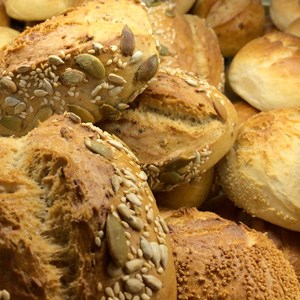Wheat flour is the main ingredient used in bakeries and needs to be of consistently high quality for work in the bakery to run smoothly. At the same time, wheat flour is a biochemical material that is strongly influenced by the cultivar of wheat grown and conditions in the growing environment. This is why Swedish mills devote much effort to quality control of the flours they produce.
Mills can check flour quality in many different ways, for example by measuring protein content, water absorption capacity, dough strength, and dough changes during kneading. Different mills use different measurements, and this is partly guided by tradition.
Test baking to get good results
However, experience shows that even if all stages of quality control produce good results, the wheat flour can underperform when it is baked. For this reason, Swedish mills must commit resources to test baking of their wheat flour.
The results of test baking vary greatly depending on the method used, which can mean that the flour works well for some bakery products but causes problems for others. In her doctoral thesis, Louise Selga examined the baking quality of wheat flour from several perspectives.
– To assess whether the chemical composition of the flour affects baking quality, I measured three important components: the composition of gluten proteins, the content of arabinoxylan - the main fibre type in wheat flour - and the amount of damaged starch in the flour, says Louise.
More gluten gives larger loaf volume
A high content of gluten proteins of larger size led to larger loaf volume. The other components in the flour mainly affected its water absorption capacity. Tests were performed with different instruments used internationally for quality control, to see if the quality control system of the participating Swedish mills could be improved.
Louise also investigated whether test baking is a necessary step in quality control or whether baking test results could be predicted based on the results of other analyses. She obtained promising results for winter wheat which is the main crop in Sweden.
– Reducing the amount of test baking needed for winter wheat by using prediction models instead could potentially lead to significant savings, concludes Louise.

